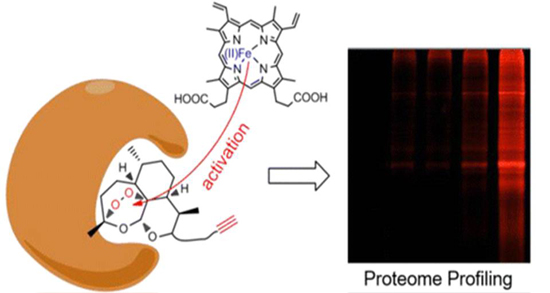Unveiling the protein targets and mechanism of action of artemisinin in cancer cells
Artemisinin (Qinghaosu), a sesquiterpene lactone containing a 1,2,4-trioxane motif extracted from the medicinal plant species wormwood (Artemisia annua L.), has been widely used for the treatment of malaria. Besides the potent antimalarial activity, numerous studies have unearthed the anticancer activity of artemisinin. Although artemisinin has been shown to be effective against human cancer cells from numerous studies, and hundreds of cytotoxic artemisinin derivatives have been reported in the past two decades, the direct protein target(s) of this mysterious structural and functional unique natural product are poorly studied.
Prof. XIAO Youli’s group at CAS Center for Excellence in Molecular Plant Sciences, Institute of Plant Physiology and Ecology, Shanghai Institutes for Biological Sciences, CAS, unveiled the protein targets and mechanism of action of artemisinin in cancer cell proteome. By utilizing a chemical probe of artemisinin activated by heme, 79 proteins were enriched and identified as artemisinin-alkylated targets. Artemisinin may exert its unique anticancer activity through alkylation of multiple key proteins related to cell viability under an iron-rich environment within cancer cells.
